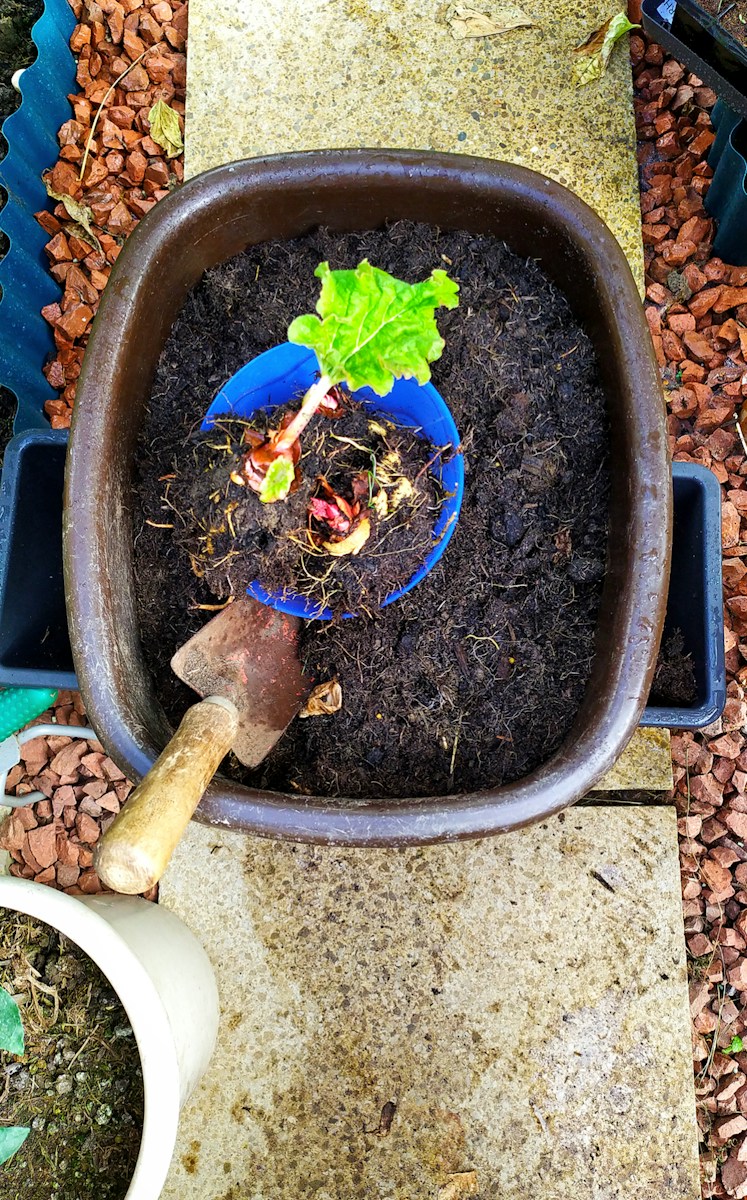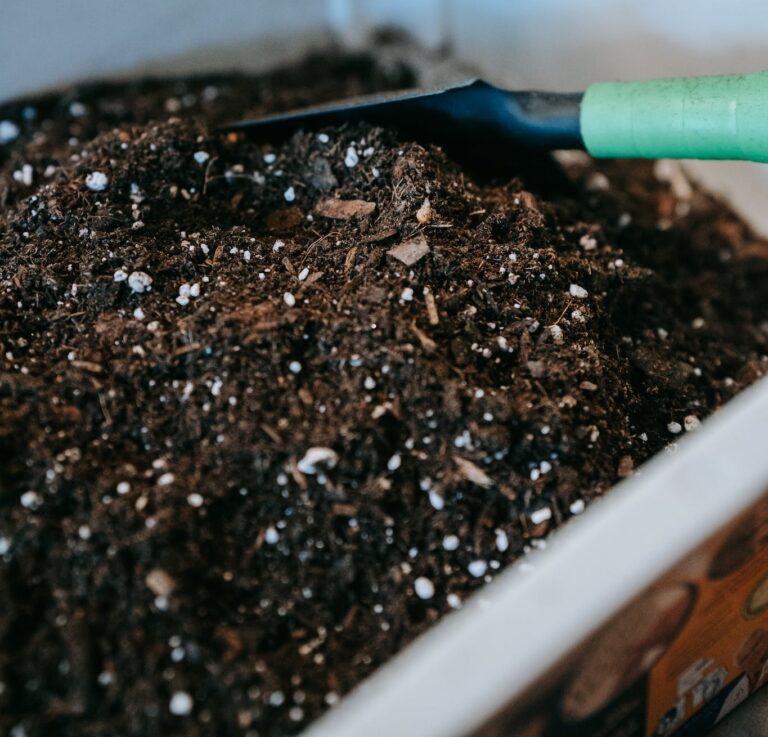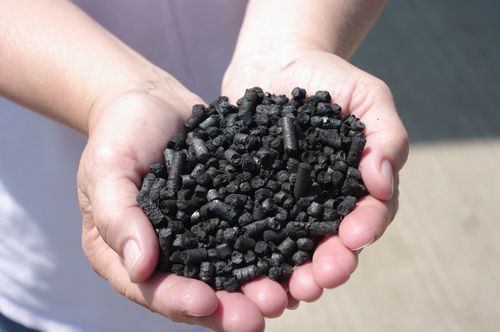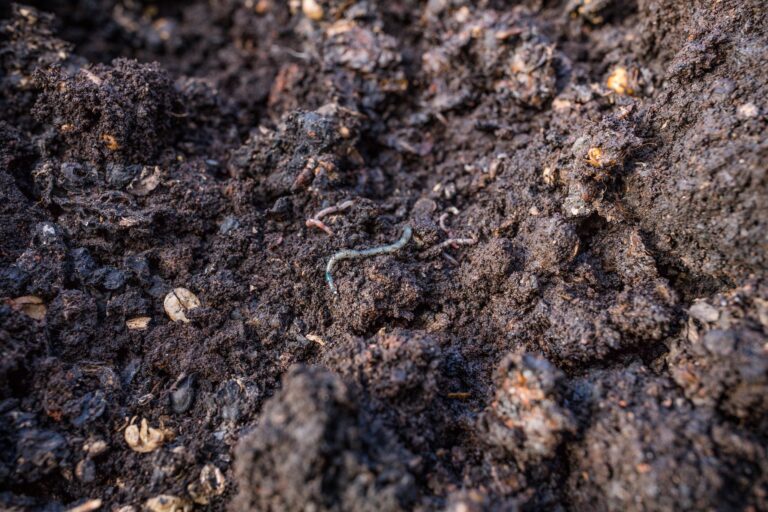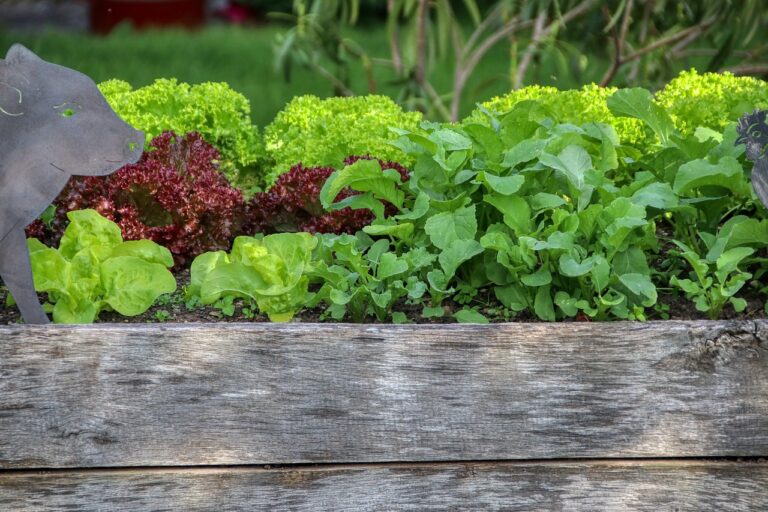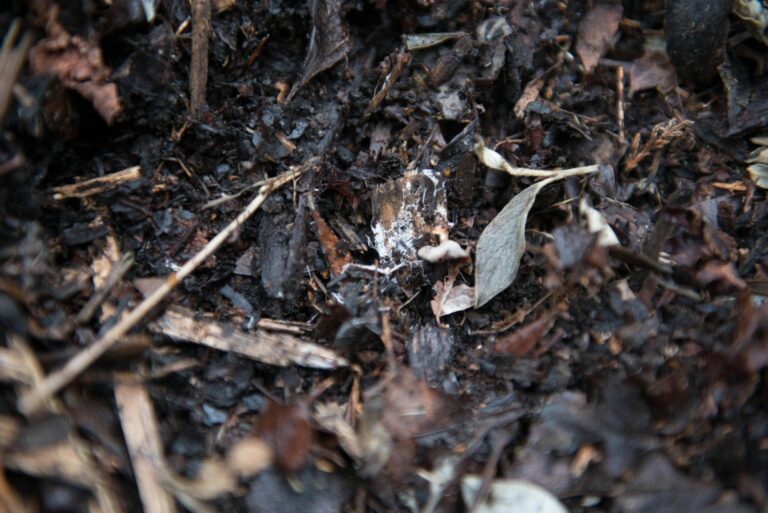As you step into the verdant world of indoor gardening, a captivating array of possibilities surrounds you, much like a flourishing garden bursting with vibrant colors. Yet, one question lingers, beckoning you to explore further: which compost truly reigns supreme for nurturing your green companions?
With each option boasting its own set of unique advantages and drawbacks, the quest to unveil the ideal formula for nourishing your indoor plant family can feel overwhelming. But fear not, fellow plant enthusiast! Join me on a captivating journey as we delve into the secrets of the most suitable compost, unlocking the key to flourishing indoor botanical sanctuaries.
This comprehensive guide will illuminate the intricate world of indoor plant compost, offering insightful explorations into the following:
- Organic Compost: Discover the power of organic compost, a cornerstone for healthy plant growth, and unveil its remarkable benefits over synthetic fertilizers.
- All-Purpose Potting Mix: Learn how to choose the perfect all-purpose potting mix by delving into its key considerations: soil composition, nutrient availability, and moisture retention.
- Soil Composition: Explore the crucial role of soil composition in fostering optimal plant health and uncover the importance of balanced organic matter and appropriate pH levels.
- Nutrient Availability: Understand the vital role of adequate nutrient availability in potting mix for ensuring optimal plant growth, and explore strategies for achieving this balance.
- Moisture Retention: Grasp the delicate dance of moisture retention in indoor gardening, learning how to prevent both overwatering and underwatering by choosing the right compost mix.
- Vermicompost: Dive into the wonders of vermicompost, also known as worm castings, and discover its treasure trove of benefits for your indoor plants.
- Coco Coir: Explore the sustainable and versatile nature of coco coir, a valuable compost option derived from coconut husks, and unlock its advantages over traditional peat moss.
- Peat Moss: Understand the benefits and drawbacks of peat moss as a compost component, learning how to utilize it effectively and exploring sustainable alternatives.
- Mushroom Compost: Uncover the magic of mushroom compost, a powerhouse of nutrients that can enhance the growth and health of your indoor plant haven.
- Leaf Mold: Learn how to create and utilize leaf mold, a nutrient-rich compost option made from decomposed leaves, and discover its valuable contributions to your indoor garden.
- Homemade Compost: Embrace the satisfaction and sustainability of creating your own nutrient-rich compost at home using organic waste and yard trimmings.
- Manure-based Compost: Delve into the proper use of manure-based compost, understanding its nutrient composition and how to harness its benefits for your plant companions.
- Compost Tea: Discover the magic of compost tea, a natural and effective liquid fertilizer brimming with benefits for your indoor plants.
Organic Compost
Organic compost is an essential component for indoor plants, providing them with necessary nutrients and promoting healthy growth. When it comes to the benefits of organic compost, there are several key advantages that make it a superior choice for indoor gardening.
Firstly, organic compost is rich in vital nutrients such as nitrogen, phosphorus, and potassium, which are essential for plant growth. These nutrients are released slowly over time, ensuring a steady supply for the plants. This is in contrast to synthetic fertilizers, which can provide a quick burst of nutrients but may lead to nutrient imbalances and harm the overall health of the plants.
Secondly, organic compost improves soil structure and drainage. It helps to retain moisture while also allowing excess water to drain away, preventing the roots from becoming waterlogged. This creates a healthy environment for the plants, reducing the risk of root rot and other water-related issues.
Lastly, different types of organic compost can be compared based on their specific benefits. For example, compost made from kitchen scraps and yard waste can provide a higher concentration of nutrients, while compost made from animal manure can add beneficial microorganisms to the soil.
All-Purpose Potting Mix
When it comes to choosing the best potting mix for indoor plants, there are three key factors to consider:
Soil composition: The soil composition of the potting mix should be well-balanced, providing a combination of organic matter, such as peat moss or coconut coir, and inorganic materials like perlite or vermiculite.
Nutrient availability: In terms of nutrient availability, a good all-purpose potting mix should contain a blend of macronutrients (nitrogen, phosphorus, and potassium) as well as micronutrients (iron, manganese, zinc, etc.) to support healthy plant growth.
Moisture retention: Lastly, moisture retention is crucial to ensure that plants receive adequate water without becoming waterlogged, so a potting mix with good moisture retention properties, like sphagnum moss or composted bark, is ideal.
Soil Composition
To create an ideal growing medium for indoor plants, selecting a well-balanced all-purpose potting mix is essential. The soil composition greatly affects the overall health and growth of indoor plants.
Soil fertility plays a crucial role in providing essential nutrients for plants. A good potting mix should have a balanced blend of organic matter, such as compost or peat moss, which improves soil fertility and provides a steady release of nutrients to the plants.
Additionally, the pH levels of the potting mix should be within the optimal range for the specific plants being grown. Most indoor plants prefer slightly acidic to neutral pH levels, around 6.0 to 7.0. It’s important to regularly monitor and adjust the pH levels to ensure optimal plant growth and nutrient uptake.
Nutrient Availability
For optimal nutrient availability in all-purpose potting mix, it’s important to ensure a balanced blend of organic matter and appropriate pH levels.
Nutrient absorption is vital for healthy plant growth, and the composition of the potting mix plays a crucial role in facilitating this process. Organic matter, such as composted plant material or well-rotted manure, provides essential nutrients like nitrogen, phosphorus, and potassium. These nutrients are released slowly over time, ensuring a steady supply for the plants.
Additionally, maintaining the appropriate pH levels is crucial for nutrient availability. Most indoor plants prefer a slightly acidic to neutral pH range, typically between 6.0 and 7.0. Adjusting the pH of the potting mix can enhance nutrient uptake and promote optimal plant growth.
Moisture Retention
After ensuring optimal nutrient availability in all-purpose potting mix, the next important factor to consider is the moisture retention capability of the mix. Moisture control plays a crucial role in the overall health and growth of indoor plants, as it directly affects their hydration levels.
A good all-purpose potting mix should have the ability to retain moisture while also allowing for proper drainage. This balance is essential to prevent overwatering or underwatering, which can both be detrimental to plant health.
To ensure effective moisture retention, it’s important to choose a mix that contains ingredients like peat moss, coconut coir, or vermiculite, as these materials have high water-holding capacities.
Additionally, watering techniques such as bottom watering or misting can help maintain adequate moisture levels without saturating the soil.
Vermicompost
Vermicompost, also known as worm castings, is a nutrient-rich organic fertilizer produced through the process of vermicomposting. This type of composting involves the use of worms to break down organic materials such as kitchen scraps, yard waste, and paper into a dark, crumbly substance that’s beneficial for indoor plants.
Here are some key benefits of using vermicompost for indoor plants:
- Nutrient-rich: Vermicompost is packed with essential nutrients such as nitrogen, phosphorus, and potassium, which are vital for plant growth and development.
- Microbial activity: The presence of beneficial microorganisms in vermicompost helps improve soil structure and enhances nutrient availability for plants.
- Enhanced water-holding capacity: Vermicompost has excellent moisture retention properties, ensuring that indoor plants receive adequate hydration.
- Reduced risk of pests and diseases: Vermicompost contains enzymes and beneficial bacteria that help suppress harmful pathogens, reducing the chances of plant diseases.
- Sustainable and eco-friendly: Vermicomposting is a sustainable way to recycle organic waste and create a valuable resource for indoor gardening.
When compared to traditional compost, vermicompost has several advantages. It’s more concentrated in nutrients, making it a highly effective fertilizer for indoor plants. Additionally, vermicompost has a higher water-holding capacity, which can be especially beneficial for plants grown in containers.
Coco Coir
As we explore alternative compost options for indoor plants, one highly recommended choice is Coco Coir, a versatile and eco-friendly growing medium derived from coconut husks. Coco coir offers several benefits that make it an excellent option for indoor plants.
Firstly, coco coir has excellent water retention properties, allowing it to hold water for longer periods compared to other composts. This means that plants grown in coco coir require less frequent watering, reducing the risk of overwatering and root rot.
Secondly, coco coir is pH neutral, making it suitable for a wide range of plants. Unlike peat moss, which tends to be more acidic, coco coir provides a more balanced pH level for optimal plant growth.
Additionally, coco coir is a renewable resource that helps reduce environmental impact. It’s a byproduct of the coconut industry, utilizing waste material that would otherwise go to waste.
Compared to peat moss, coco coir is also more sustainable as it doesn’t contribute to the depletion of peat bogs, which are important carbon sinks and habitats for various plant and animal species.
Peat Moss
Peat moss is a valuable component in indoor plant compost due to its numerous benefits. It has excellent water retention properties, which helps to keep the soil moist and prevents over-drying.
Additionally, peat moss improves soil structure by increasing its ability to hold nutrients and air, promoting healthy root growth.
To use peat moss, simply mix it with other compost materials in a ratio of 1:1 and ensure it’s evenly distributed throughout the potting mixture for optimal results.
Benefits of Peat Moss
Using peat moss in indoor plant compost provides numerous benefits that enhance the growth and overall health of plants. Peat moss is widely used in container gardening due to its ability to retain moisture, which helps prevent overwatering and root rot. Additionally, it has excellent aeration properties, promoting healthy root development and preventing soil compaction.
Peat moss also has a slightly acidic pH, which is beneficial for acid-loving plants such as azaleas and blueberries. Furthermore, it acts as a natural source of organic matter, enriching the soil with essential nutrients and improving its structure.
Despite its many advantages, if you’re looking for alternatives to peat moss in indoor gardening, coconut coir and composted bark are viable options that provide similar benefits.
How to Use Peat Moss
When incorporating peat moss into your indoor plant compost, it’s important to follow these steps for proper usage.
First, ensure that the peat moss is thoroughly moistened before adding it to the compost. This will help it mix more easily with other ingredients and prevent it from drying out too quickly.
Next, mix the peat moss with other organic materials such as composted manure or coconut coir to create a well-balanced and nutrient-rich growing medium. It’s recommended to use peat moss in a ratio of 1:1 with other organic materials.
Additionally, be aware that peat moss isn’t a sustainable resource and has negative environmental impacts, so consider using alternatives such as coconut coir or composted bark. These alternatives provide similar benefits to peat moss while being more environmentally friendly.
Mushroom Compost
What are the benefits of incorporating mushroom compost into your indoor plant care routine?
Mushroom compost is a nutrient-rich organic material that can greatly enhance the growth and health of your indoor plants. Here are some key benefits of using mushroom compost:
- Improved soil structure: Mushroom compost improves the structure of the soil, making it more porous and allowing for better drainage. This helps prevent waterlogged soil and reduces the risk of root rot.
- Increased nutrient availability: Mushroom compost is rich in essential nutrients, such as nitrogen, phosphorus, and potassium. These nutrients are slowly released into the soil, providing a steady supply of nourishment to your plants.
- Enhanced microbial activity: Mushroom compost contains beneficial microorganisms that help break down organic matter and release nutrients for plant uptake. This improves the overall health of the soil ecosystem and promotes stronger, more resilient plants.
- Weed suppression: The use of mushroom compost can help suppress weed growth by providing a thick layer of organic material that prevents weed seeds from germinating and taking hold in the soil.
- Sustainable and eco-friendly: Making mushroom compost at home is a sustainable practice that allows you to recycle organic waste and reduce your carbon footprint. You can easily make mushroom compost by combining organic materials like straw, coffee grounds, and vegetable scraps with mushroom spores and allowing them to decompose over time.
Leaf Mold
When it comes to indoor plants, leaf mold is a highly beneficial compost option.
Leaf mold is rich in organic matter and nutrients, which can improve soil structure and fertility.
Additionally, making leaf mold is a simple process that involves collecting fallen leaves, shredding them, and allowing them to decompose over time.
Benefits of Leaf Mold
Using leaf mold as compost provides numerous benefits for indoor plants, enhancing their growth and overall health.
Leaf mold is a type of compost that’s made from decomposed leaves. It’s rich in nutrients and organic matter, making it an excellent choice for nourishing indoor plants.
Here are some of the key benefits of using leaf mold as compost:
- Improves soil structure: Leaf mold helps to improve the structure of the soil, making it more porous and allowing for better water retention and drainage.
- Enhances nutrient availability: The nutrients present in leaf mold are slowly released into the soil, providing a steady supply of essential nutrients for the plants.
- Supports beneficial soil organisms: Leaf mold promotes the growth of beneficial soil organisms such as earthworms, which help to aerate the soil and break down organic matter.
- Suppresses diseases: Leaf mold has natural disease-suppressing properties, helping to prevent the growth of harmful pathogens in the soil.
- Environmentally friendly: Making leaf mold is an eco-friendly way to recycle fallen leaves and reduce waste.
To make leaf mold, collect fallen leaves in a pile or compost bin. Shred or chop the leaves to speed up the decomposition process. Keep the pile moist and turn it occasionally to ensure proper aeration. Over time, the leaves will break down into a dark, crumbly compost that can be used to enrich the soil and nourish your indoor plants.
How to Make Leaf Mold
After understanding the benefits of leaf mold as compost for indoor plants, it’s now important to learn how to make leaf mold.
Making leaf mold is a simple and cost-effective way to enhance your gardening practices. To start, gather fallen leaves and place them in a designated pile or container. It’s best to shred the leaves to speed up the decomposition process. Ensure that the pile is moist, but not overly wet, as excessive moisture can lead to rotting.
Turn the pile occasionally to promote even decomposition. Within 6-12 months, the leaves will break down into a dark, crumbly substance known as leaf mold. This nutrient-rich compost can then be used in your indoor plants, providing essential minerals, improving soil structure, and retaining moisture.
Incorporating leaf mold into your gardening routine will yield healthier, more vibrant plants.
Homemade Compost
To create nutrient-rich compost for indoor plants, I highly recommend making your own at home using a combination of organic waste and yard trimmings. Homemade compost offers several benefits over store-bought options.
First and foremost, it’s cost-effective, as you can utilize materials that would otherwise be discarded. Additionally, homemade compost is free from harmful chemicals and pesticides, ensuring the health and safety of your indoor plants.
The homemade composting process is relatively simple and can be done in a few steps:
- Gather organic waste such as fruit and vegetable scraps, coffee grounds, and eggshells.
- Collect yard trimmings like leaves, grass clippings, and small branches.
- Layer the organic waste and yard trimmings in a compost bin or pile.
- Moisten the pile to maintain the ideal moisture level for decomposition.
- Turn the compost regularly to aerate it and speed up the decomposition process.
By following these steps, you can create a rich, dark compost that’s full of essential nutrients for your indoor plants. Remember to avoid adding meat, dairy, or oily food scraps, as they can attract pests and create unpleasant odors.
Making your own homemade compost not only benefits your indoor plants but also reduces waste and promotes sustainability. Give it a try and watch your plants thrive!
Manure-based Compost
Manure-based compost is an excellent organic amendment that provides essential nutrients for indoor plants. It is derived from animal manure, which undergoes a composting process to create a nutrient-rich soil conditioner. The use of manure-based compost offers several benefits for indoor plant growth and health.
One of the key advantages of using manure-based compost is its high nutrient content. The table below illustrates the nutrient composition of typical manure-based compost:
| Nutrient | Nitrogen (N) | Phosphorus (P) | Potassium (K) |
|---|---|---|---|
| Composition | 1.5 – 3% | 1 – 2% | 1 – 2% |
These nutrients are essential for plant growth, with nitrogen promoting leaf development, phosphorus supporting root growth, and potassium aiding in overall plant health and resilience. By incorporating manure-based compost into the potting mix, indoor plants can receive a steady supply of these vital nutrients.
Furthermore, manure-based compost also enhances soil fertility and structure. It improves water retention, drainage, and aeration, creating an optimal environment for root growth and nutrient uptake. The organic matter in the compost acts as a slow-release fertilizer, gradually releasing nutrients over time and reducing the risk of nutrient leaching.
However, it is important to note that manure-based compost should be properly aged and cured before use to ensure that any potential pathogens or weed seeds are eliminated. Additionally, the choice of manure source is crucial, as different animals may produce compost with varying nutrient profiles.
Compost Tea
Having explored the benefits of manure-based compost for indoor plants, it’s now time to delve into the topic of compost tea. Compost tea is a nutrient-rich liquid fertilizer derived from compost, and it offers several benefits for indoor plants.
Compost Tea Benefits:
- Enhanced Nutrient Availability: Compost tea contains a wide range of nutrients, such as nitrogen, phosphorus, and potassium, which are essential for plant growth. This tea helps make these nutrients more readily available to the plants, promoting healthier growth and development.
- Improved Soil Structure: When applied to the soil, compost tea can help improve soil structure by increasing its water-holding capacity and promoting better drainage. This allows for better nutrient absorption by the plants’ roots.
- Suppresses Plant Diseases: Compost tea contains beneficial microorganisms, such as bacteria and fungi, which can help suppress harmful pathogens. These microorganisms can compete with disease-causing organisms, reducing the risk of plant diseases.
- Stimulates Plant’s Immune System: The beneficial microorganisms present in compost tea can also stimulate the plant’s immune system, making it more resistant to pests and diseases.
- Environmentally Friendly: Compost tea is a natural and sustainable fertilizer option. It helps recycle organic waste and reduces the need for chemical fertilizers, minimizing environmental impact.
Compost Tea Recipe:
To make compost tea, follow these steps:
- Fill a container with water, preferably non-chlorinated.
- Add compost to the water, using a ratio of 1 part compost to 5 parts water.
- Stir the mixture thoroughly and let it steep for 24 to 48 hours.
- Strain the liquid to remove any solid particles.
- Dilute the compost tea with water, using a ratio of 1 part tea to 4 parts water, before applying it to your indoor plants.
Compost tea is a fantastic way to provide your indoor plants with a nutrient boost while improving soil health and reducing the risk of diseases. Incorporating this natural fertilizer into your plant care routine can contribute to their overall well-being and longevity.
Conclusion
In conclusion, when it comes to choosing the best compost for indoor plants, there are several options to consider.
Organic compost, all-purpose potting mix, vermicompost, coco coir, peat moss, leaf mold, homemade compost, manure-based compost, and compost tea all have their own unique benefits and characteristics.
It’s important to select the compost that suits the specific needs of your indoor plants, taking into account factors such as moisture retention, nutrient content, and pH levels.
Experimentation and observation will help determine the most effective compost for your indoor gardening success.
